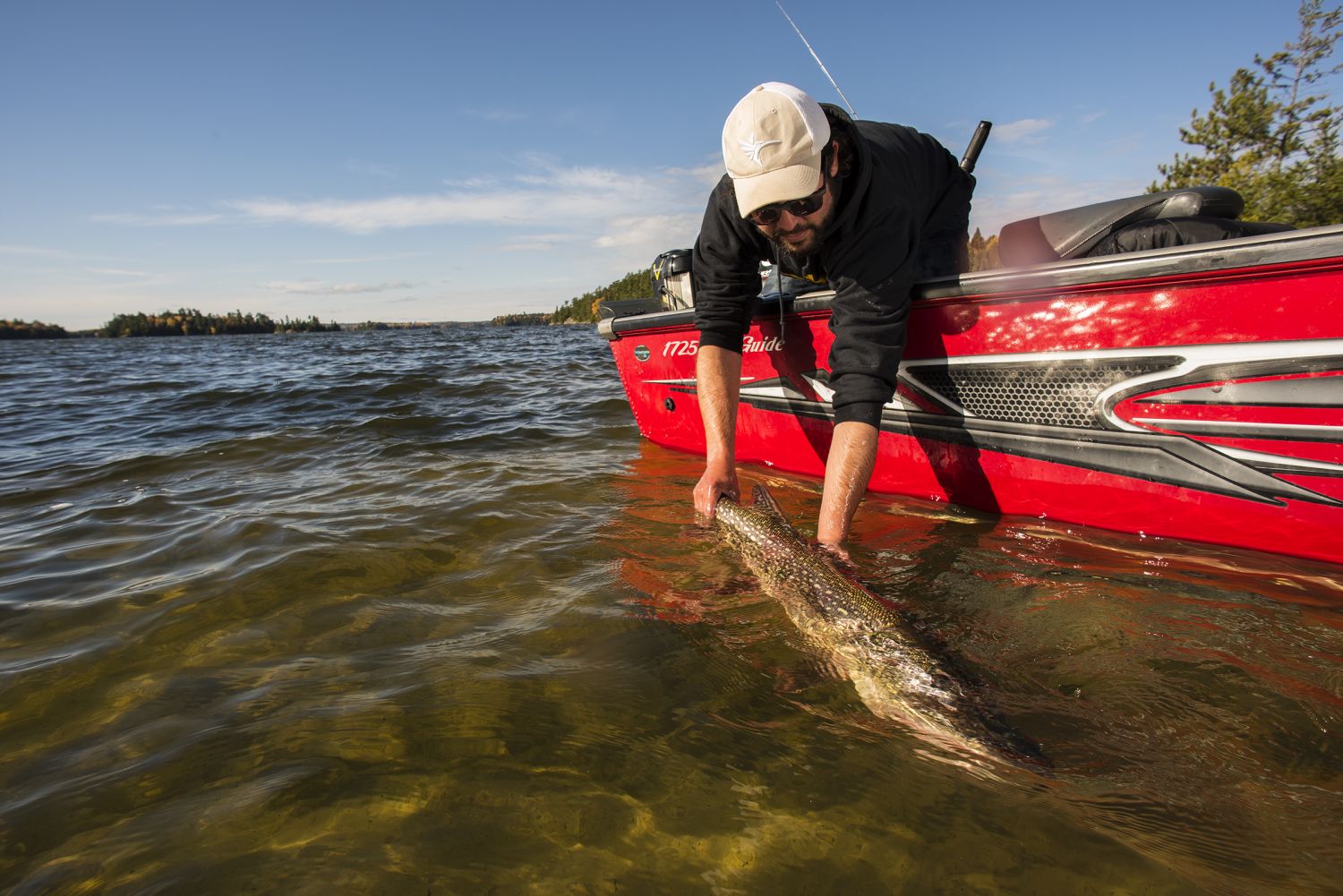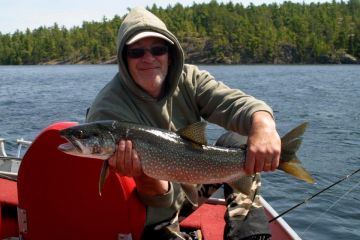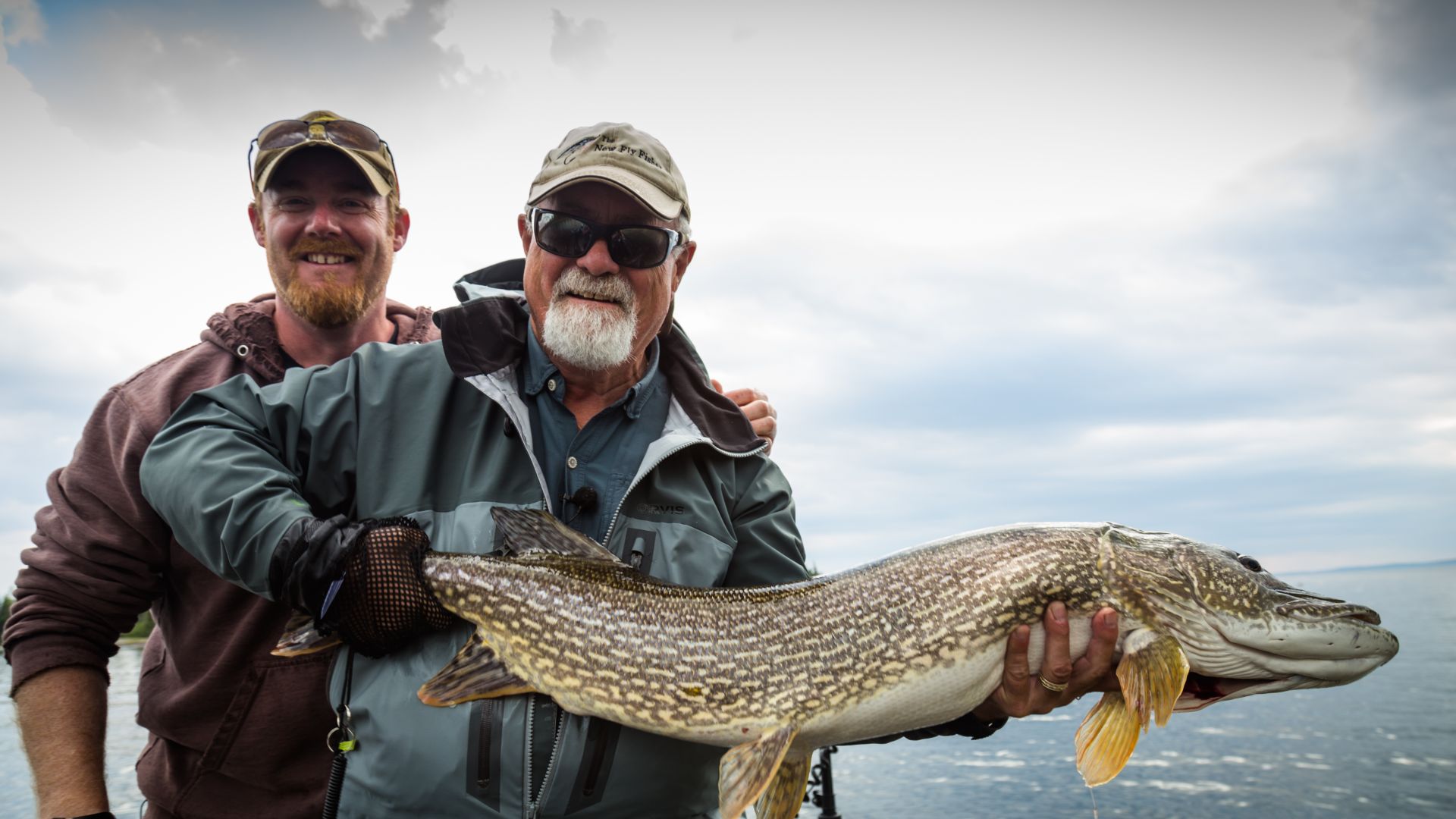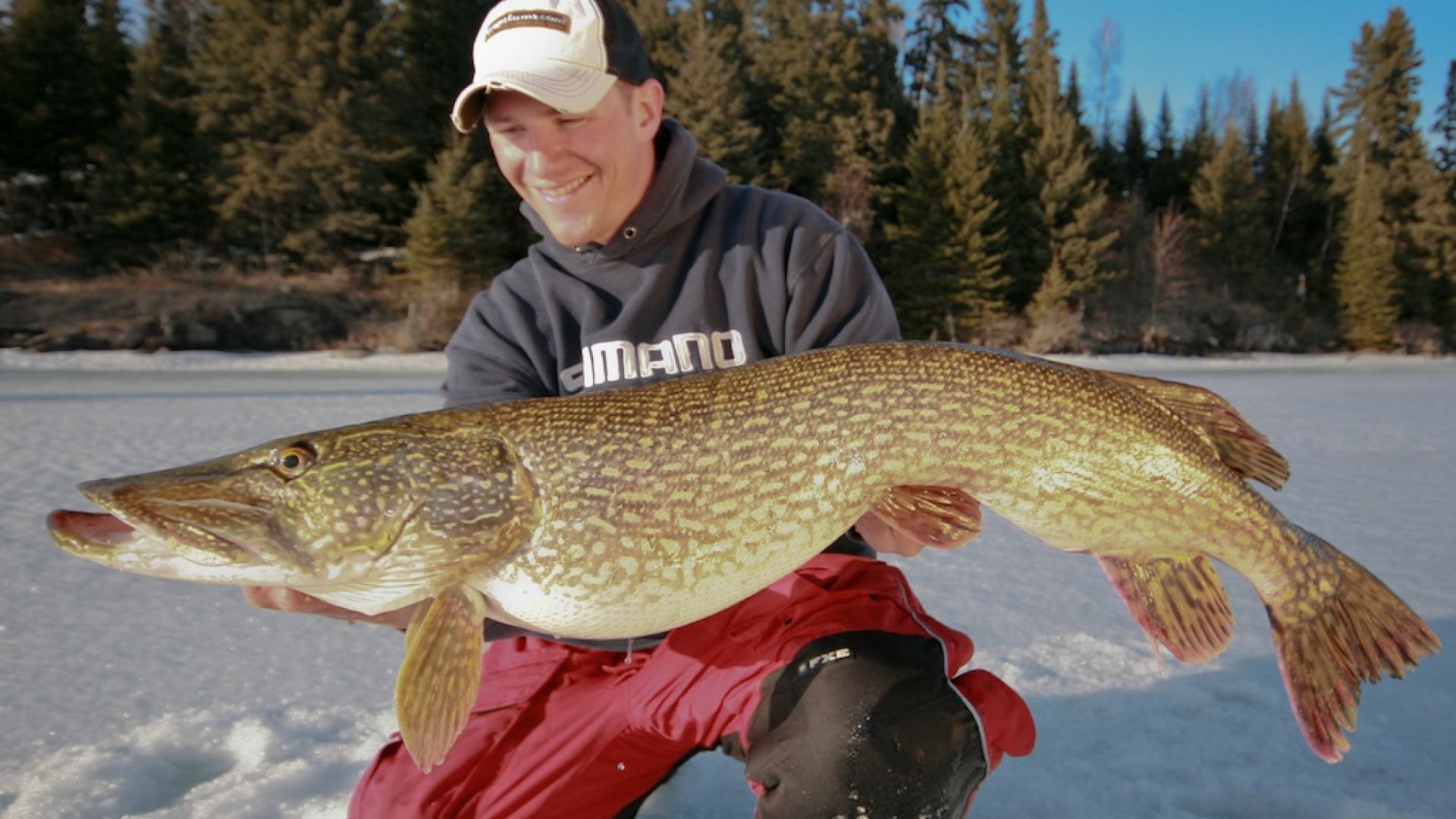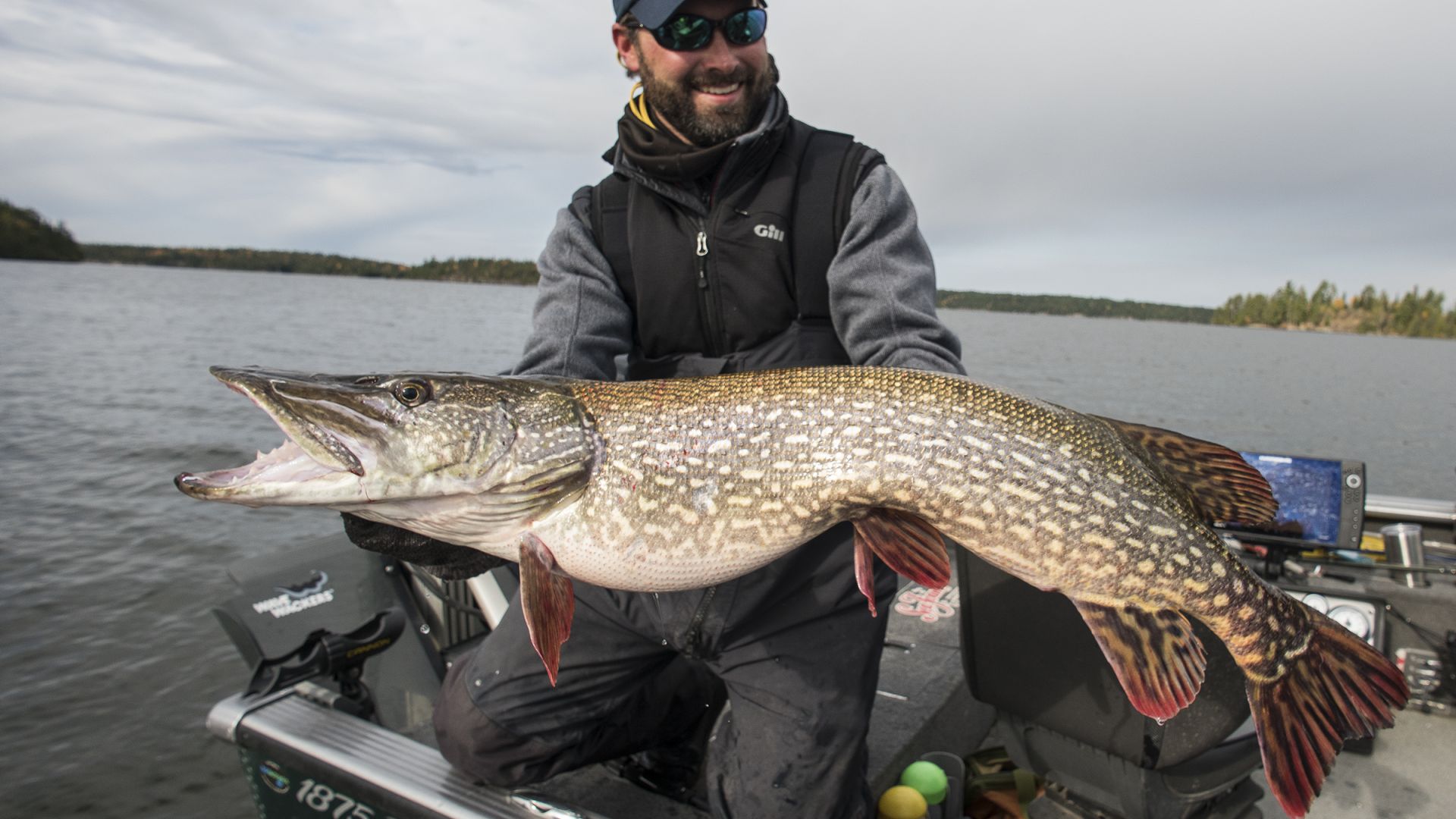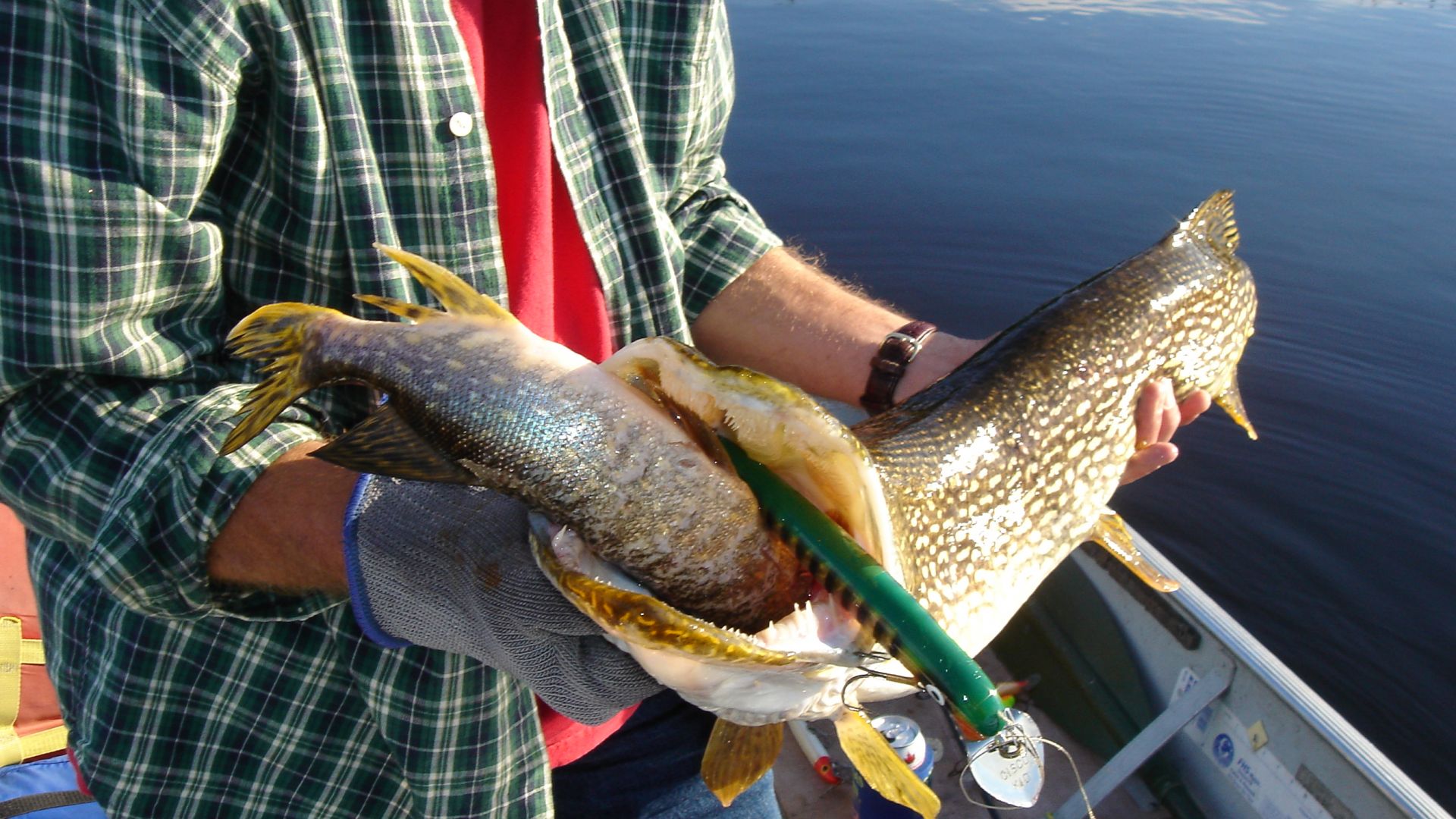As the author of this article, I certainly do not profess to be a pike expert so when I had the idea to write this story, I was fortunate to have my good friend and professional angler Jeremy Smith agree to provide me with his pike fishing secrets. Jeremy is a host with Lindner's Angling Edge and he's fished Sunset Country many times for these big predators. So here's how the interview went:
Sunset Country: Jeremy thanks for doing this! You have fished up here for pike in every season and under all kinds of weather conditions. What season do you like the most when it comes to pike fishing in Sunset Country?
Jeremy: Hi Gerry, always glad to talk fishing. I love fishing for pike in every season but if I had to pick one, it would definitely be early Fall.
Sunset Country: Why the fall?
Jeremy: I like the slightly cooler weather and the big pike seem more predictable in the Fall. It's also easier to pattern their behavior in the fall and they do seem really hungry at this time of year!
Sunset Country (laughing): My experience with pike is they're always hungry! What kind of structure do you look to fish during the fall months?
Jeremy: Yep, they are always hungry, but I think even more so in the fall as the water temps cool down. If not more hungry, they certainly are more active. As to structure, I almost always look to rocky structures—off points, gull rocks, reefs, etc. These spots give them good cover, and if possible, I look to current areas with rocky structures. You're virtually guaranteed to find at least one big pike in a zone like that and often more than one.
Sunset Country: Well, we have no shortage of structures like that in our Canadian Shield lakes, so what do you prefer in terms of your approach? Do you cast or troll for them at that time of year?
Jeremy: Well, I do both depending on conditions but truthfully, I like trolling the best. You can cover a lot of water and zone in on the structure we discussed. Trolling a shoreline around a solitary island will often yield a hungry fish and as I said, if there's current present, you have a very good chance at landing a big fish using this method.
Sunset Country: What kind of lures do you use most often?
Jeremy: I like to troll big crankbaits, flat sticks and my favorite I think, is a jake! I usually troll between 3 and 4 MPH and I tend to stay a little further off the shore than I would fish if I were targeting muskie using this method. My go-to depths range between 12 and 18 feet most of the time.
Sunset Country: Shortly after ice out, northern pike is one of the top species anglers go after since the walleye season is closed for the spawn. What are your tips for our readers on spring fishing for pike?
Jeremy: Well, the water temperatures are still pretty low at that time of year, so I looked for shallower, black bottom bays, and I also looked for these bays that are adjacent to a bog where meltwater is flowing into the lake. The main lake can still be frozen at that time of year, so the pike prefers these slightly warmer spots in these back bays, which usually melt first.
Sunset Country: Interesting, how deep are the big northerns in the spring?
Jeremy: In the early spring, I look for the biggest fish in 5 to 10 feet of water.
Sunset Country: What is your tackle selection and technique for early spring pike?
Jeremy: In the spring, I like using size 12 X-Raps and large, soft plastics—they seem to work the best. In terms of technique, I cast for them and use a twitch/pause retrieve with lots of hangtime between twitches.
Sunset Country: Most anglers visit our region in late spring and during the summer. What tips can you provide for anglers targeting pike at that time of year?
Jeremy: Anglers have more options in the late spring and summer. Most pike at that time of year associate with the thermocline. The biggest ones will be found between 25 and 30 feet, and I usually troll for them when I am fishing those depths. I like to use deep-diving X-Raps and sometimes Sluggo boot tails. I also look for deeper weed lines on occasion, and in early or late summer, there are pike holding in the cabbage grass beds.
Sunset Country: I know you've been ice fishing up here many times and have caught some monster fish through the ice. Any tips you can think of for our ice anglers?
Jeremy: Tip-ups are my secret weapon when I target big pike through the ice. I use dead ciscos and a large jig, and the big fish often hammer these!
Sunset Country: What's your overall impression of the quality of pike fishing in Sunset Country?
Jeremy: Without a doubt, I'd put Sunset Country in Ontario at the top of my list for drive-to-pike fishing destinations. They are everywhere in your lakes, and I have seen several 45+ inch pike caught up there - I even caught one myself! If you want a good chance at regularly catching pike in the 8 to 15-pound range - with a chance at a much bigger fish over 20 pounds - there's no better place for that than Ontario's Sunset Country.
Sunset Country: Well, thanks, Jeremy. That's a good endorsement for us! All the best, and we appreciate you taking the time for this interview!
Jeremy: My pleasure, anytime!

